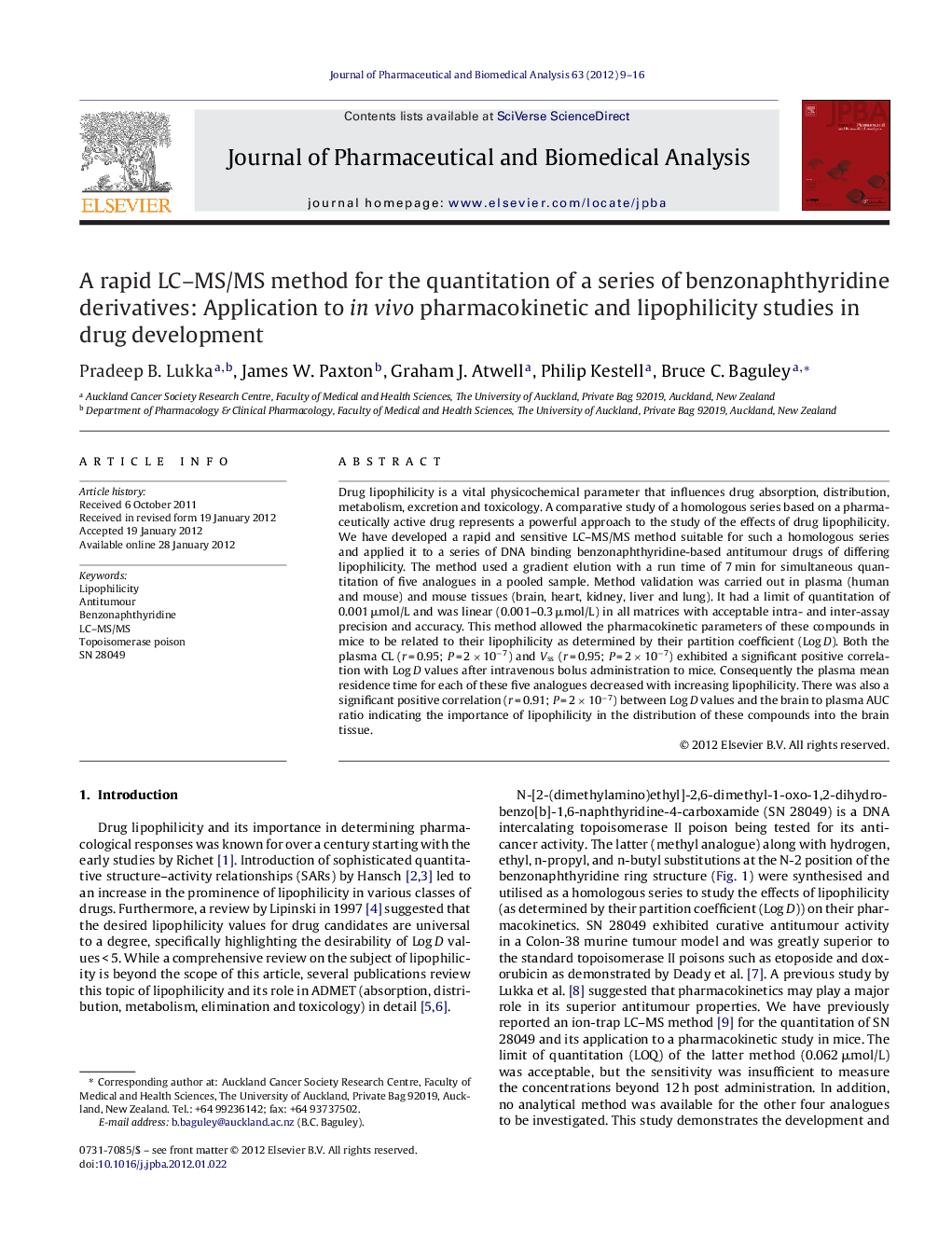| Article ID | Journal | Published Year | Pages | File Type |
|---|---|---|---|---|
| 1222294 | Journal of Pharmaceutical and Biomedical Analysis | 2012 | 8 Pages |
Drug lipophilicity is a vital physicochemical parameter that influences drug absorption, distribution, metabolism, excretion and toxicology. A comparative study of a homologous series based on a pharmaceutically active drug represents a powerful approach to the study of the effects of drug lipophilicity. We have developed a rapid and sensitive LC–MS/MS method suitable for such a homologous series and applied it to a series of DNA binding benzonaphthyridine-based antitumour drugs of differing lipophilicity. The method used a gradient elution with a run time of 7 min for simultaneous quantitation of five analogues in a pooled sample. Method validation was carried out in plasma (human and mouse) and mouse tissues (brain, heart, kidney, liver and lung). It had a limit of quantitation of 0.001 μmol/L and was linear (0.001–0.3 μmol/L) in all matrices with acceptable intra- and inter-assay precision and accuracy. This method allowed the pharmacokinetic parameters of these compounds in mice to be related to their lipophilicity as determined by their partition coefficient (Log D). Both the plasma CL (r = 0.95; P = 2 × 10−7) and Vss (r = 0.95; P = 2 × 10−7) exhibited a significant positive correlation with Log D values after intravenous bolus administration to mice. Consequently the plasma mean residence time for each of these five analogues decreased with increasing lipophilicity. There was also a significant positive correlation (r = 0.91; P = 2 × 10−7) between Log D values and the brain to plasma AUC ratio indicating the importance of lipophilicity in the distribution of these compounds into the brain tissue.
► Rapid and sensitive LC–MS/MS method applicable to variety of pharmacological studies. ► Simultaneous detection of multiple species, as applied to five benzonaphthyridine derivatives. ► Validation in human, mouse plasma and mouse tissues. ► Application to an preclinical in vivo pharmacokinetic studies.
